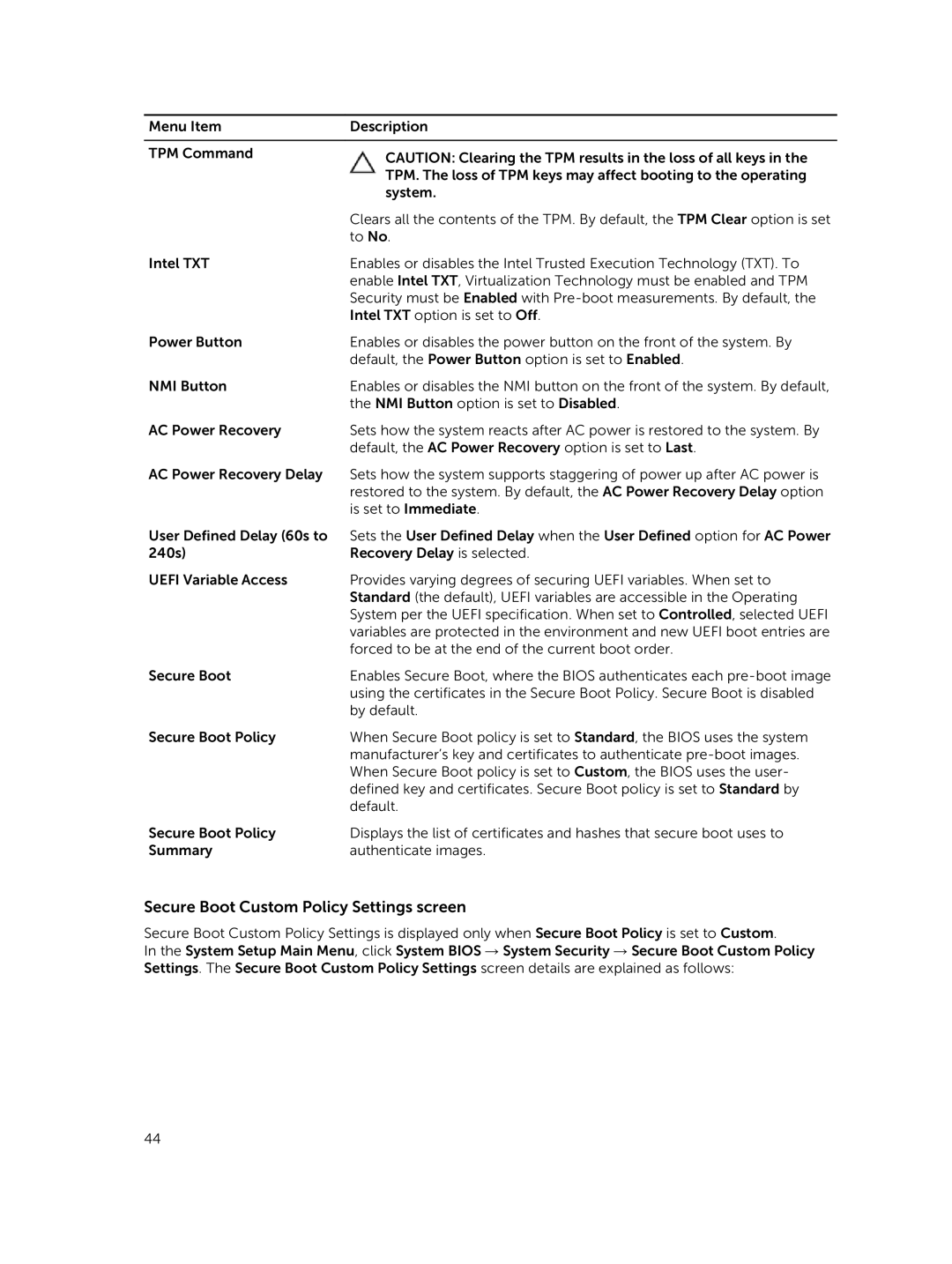
Menu Item | Description |
|
|
TPM Command | CAUTION: Clearing the TPM results in the loss of all keys in the |
| |
| TPM. The loss of TPM keys may affect booting to the operating |
| system. |
| Clears all the contents of the TPM. By default, the TPM Clear option is set |
| to No. |
Intel TXT | Enables or disables the Intel Trusted Execution Technology (TXT). To |
| enable Intel TXT, Virtualization Technology must be enabled and TPM |
| Security must be Enabled with |
| Intel TXT option is set to Off. |
Power Button | Enables or disables the power button on the front of the system. By |
| default, the Power Button option is set to Enabled. |
NMI Button | Enables or disables the NMI button on the front of the system. By default, |
| the NMI Button option is set to Disabled. |
AC Power Recovery | Sets how the system reacts after AC power is restored to the system. By |
| default, the AC Power Recovery option is set to Last. |
AC Power Recovery Delay | Sets how the system supports staggering of power up after AC power is |
| restored to the system. By default, the AC Power Recovery Delay option |
| is set to Immediate. |
User Defined Delay (60s to | Sets the User Defined Delay when the User Defined option for AC Power |
240s) | Recovery Delay is selected. |
UEFI Variable Access | Provides varying degrees of securing UEFI variables. When set to |
| Standard (the default), UEFI variables are accessible in the Operating |
| System per the UEFI specification. When set to Controlled, selected UEFI |
| variables are protected in the environment and new UEFI boot entries are |
| forced to be at the end of the current boot order. |
Secure Boot | Enables Secure Boot, where the BIOS authenticates each |
| using the certificates in the Secure Boot Policy. Secure Boot is disabled |
| by default. |
Secure Boot Policy | When Secure Boot policy is set to Standard, the BIOS uses the system |
| manufacturer’s key and certificates to authenticate |
| When Secure Boot policy is set to Custom, the BIOS uses the user- |
| defined key and certificates. Secure Boot policy is set to Standard by |
| default. |
Secure Boot Policy | Displays the list of certificates and hashes that secure boot uses to |
Summary | authenticate images. |
Secure Boot Custom Policy Settings screen
Secure Boot Custom Policy Settings is displayed only when Secure Boot Policy is set to Custom.
In the System Setup Main Menu, click System BIOS → System Security → Secure Boot Custom Policy Settings. The Secure Boot Custom Policy Settings screen details are explained as follows:
44
